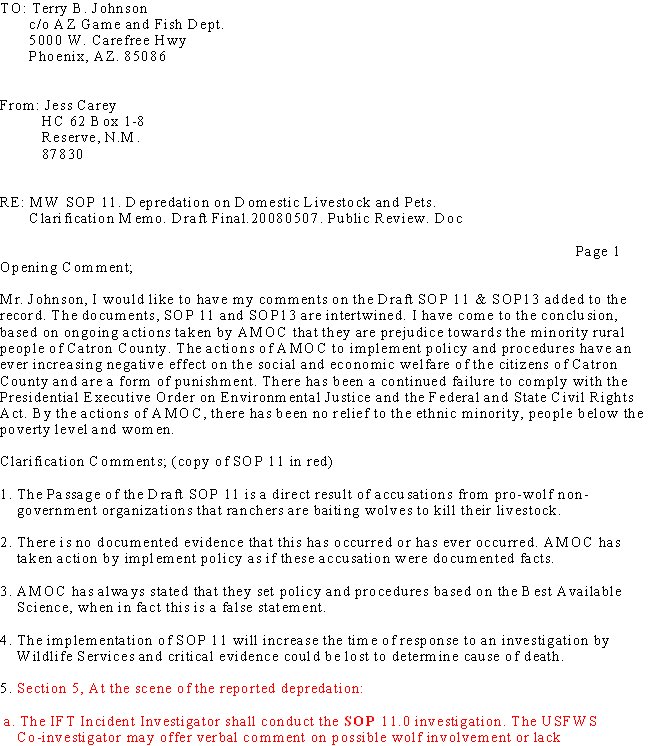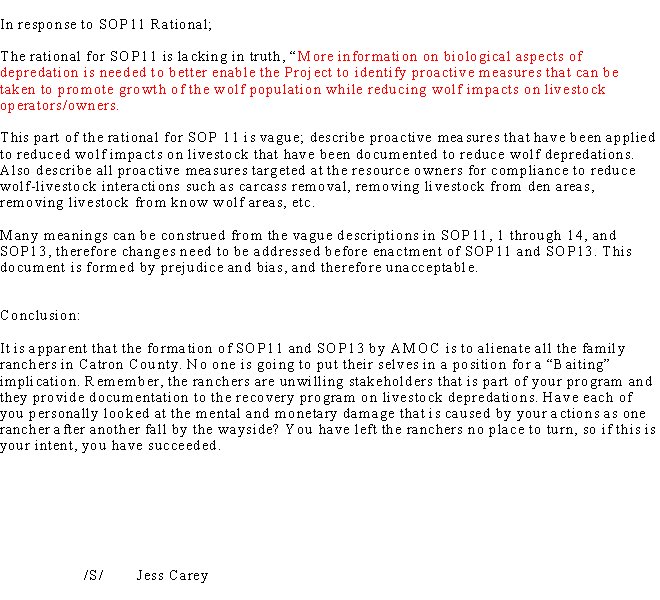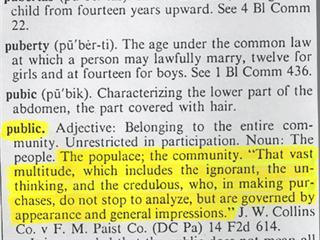A Wolf Saved From Extinction but Snared in Politics
Deaths Due to Management Diminish Wild Population's Genetic Diversity
By Juliet Eilperin
Washington Post Staff Writer
Monday, March 31, 2008; Page A06
Ten years ago, almost to the day, Jamie Rappaport Clark walked through the snow in Arizona's Apache National Forest to release 11 Mexican wolves into the wilderness. At the time, Clark directed the U.S. Fish and Wildlife Service and was confident she was beginning another successful effort to reintroduce wolves into the wild. Now, as executive vice president of the advocacy group Defenders of Wildlife, she is growing despondent about whether the experiment will succeed.
This Story
A Wolf Saved From Extinction but Snared in Politics
Mexican Wolves in the Southwest
"I actually released those doggone dogs," she recalled in a recent interview. "It's so screwed up, it's sad. Talk about snatching defeat from the jaws of victory."
The uncertainty surrounding the Mexican gray wolf, also known as el lobo, highlights the challenge of meshing conservation with politics. While biologists and zookeepers have saved the Mexican wolf, the most genetically distinct subspecies of gray wolf in North America, federal managers are struggling to translate this success into a working recovery program in the field.
Mexican wolves, which once roamed in the Southwestern United States and Mexico, saw their numbers plummet as Americans moved West and Mexicans developed their land. In 1976 the wolves were placed on the endangered species list; four years later researchers estimated that there were fewer than 50 in four separated Mexican states, and these have now disappeared.
In the late 1970s and early 1980s, the Fish and Wildlife Service paid a trapper named Roy McBride to capture several Mexican wolves south of the border. That group of five, which has expanded in captivity to more than 300, is the source of every Mexican wolf that now exists in the United States, posing a genetic challenge for biologists hoping to help the species recover.
"Anytime you have a bottleneck, a certain amount of genes are lost," said John Oakleaf, Fish and Wildlife's Mexican wolf field coordinator.
At first glance, there is no reason that Mexican wolves should not make the same sort of robust recovery that gray wolves have made in the northern Rockies. But the northern wolves have more than three times as much quality habitat as the wolves in the Southwest. And a trickier problem government officials face is that the politically influential ranching community in the Southwest has opposed the wolves' reintroduction, and the officials, in seeking to accommodate those interests, have satisfied no one.
Early in the process, federal officials created what Oakleaf called "artificial boundaries where wolves can be present or not" -- if a wolf goes beyond the official Blue Range Recovery Area, which spans 9,290 square miles, it is relocated. In addition, in 2005, Fish and Wildlife put into place "standard operating procedure 13.0," which calls for the permanent removal of wolves that come into conflict with livestock.
As a result, federal officials have been taking wolves out of the recovery area even as they've been putting them in: Fish and Wildlife has released nearly 100 Mexican wolves over the past decade, but as of last year they had counted at least 117 as removed, roughly half of them because of conflicts with cattle. Others were counted as removed because they had died. At the end of 2006, Fish and Wildlife predicted that 102 wolves, including 18 breeding pairs, would live in the wild, but the most recent survey shows that the current group numbers 52, including just four breeding pairs.
"It's like stocking a trout pond," said Eva Sargent, who directs the Southwest program for Defenders of Wildlife. "It ain't the wolves -- they're good at being wolves. It's overzealous enforcement by the agency."
Brian Millsap, Fish and Wildlife's acting assistant director for ecological services in the Southwest, said that he and other officials recognize there are problems with the wolf-removal policy but that the phalanx of groups helping manage the species' recovery -- including the U.S. Forest Service, the White Mountain Apache Tribe, and New Mexico's and Arizona's Game and Fish departments -- have not reached a consensus on what to do instead.
"What the right answer is, what's the best approach to take, is not universally agreed to," Millsap said.
While studies indicate that Mexican wolves get more than 80 percent of their sustenance from elk and deer, and a federal survey from 1998 to 2003 showed that the wolf population killed an average of four head of livestock a year, ranchers view them as a serious problem. Defenders of Wildlife compensates ranchers for verified wolf kills.
"I'd really like to see them gone," said Barbara Marks, who chairs the Arizona Cattle Growers' Association's wildlife committee and operates a cattle ranch with her husband that includes 225 acres of private property and 71,775 acres of public land. "In the middle of the night you wake up in a cold sweat when you hear your dogs barking, wondering if something's wrong."
In light of such opposition, federal officials say they need to remove problem wolves, without regard to whether they might be genetically valuable. While officials do not release into the wild any wolf that lacks a genetic duplicate in captivity, a number of scientists raising Mexican wolves in zoos argue that officials should declare a moratorium on killing the animals in the Blue Range Recovery Area because it is undercutting the wild population's genetic diversity.
Although an independent scientific panel informed the Fish and Wildlife Service that the recovery area could easily support more than 250 wolves, and possibly as many as 468, the agency's director, Dale Hall, said the continuing conflicts with livestock make him question the extent to which the population can expand beyond its current number.
But John Horning, executive director of the advocacy group WildEarth Guardians, said scientific findings have charted a clear path toward accomplishing the job Clark started a decade ago.
Instead, he said, "We are really facing the second extinction of the Mexican gray wolf in the wild."
Posts and Comments from Readers
Please include yourself in the discussion. Post a comment.
Saturday, April 12, 2008
Wolves Deaths Due to Mismanagement? Parallels in the Death of Lincoln National Forest
Subscribe to:
Post Comments (Atom)



















.jpg)


















No comments:
Post a Comment